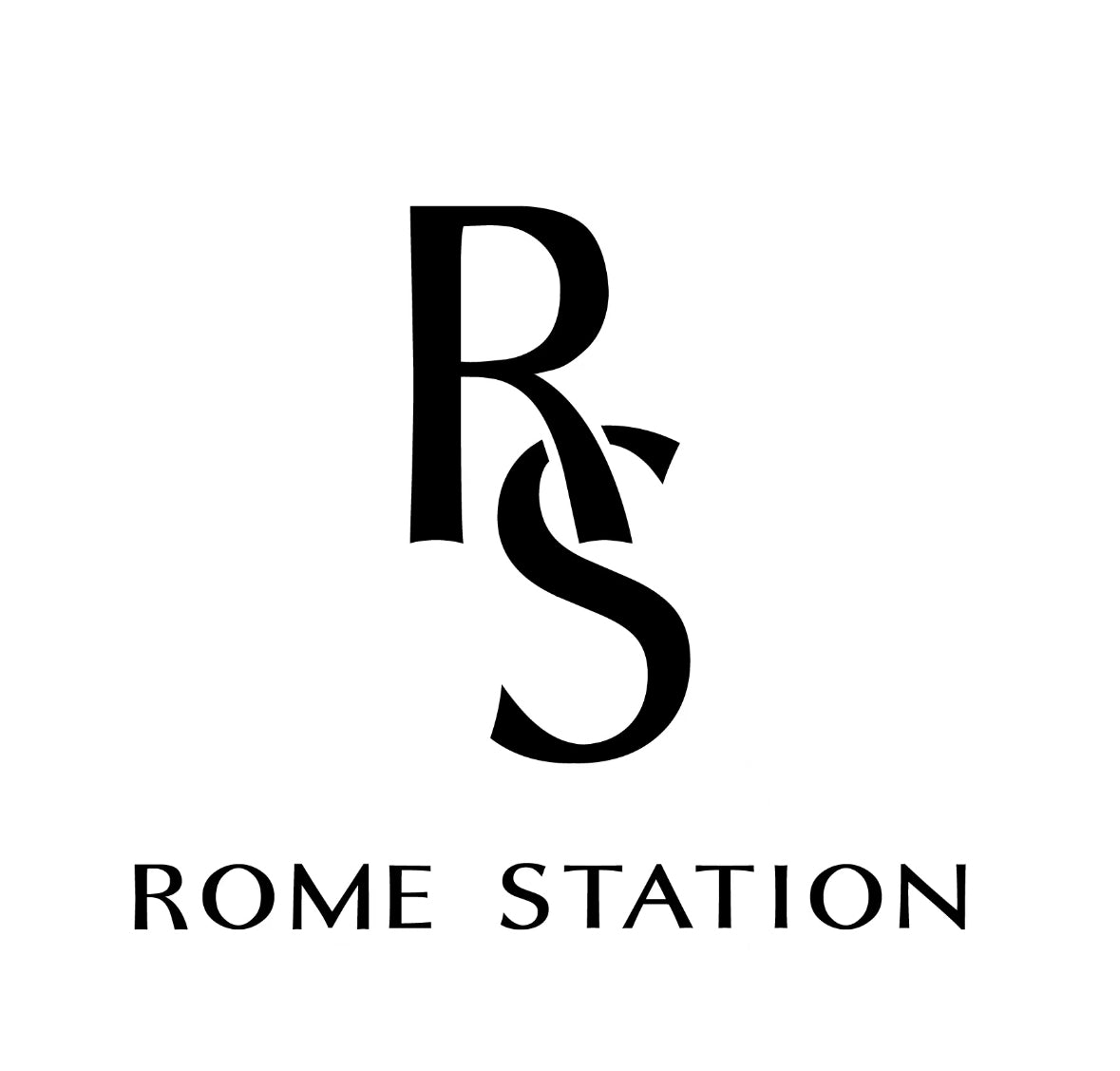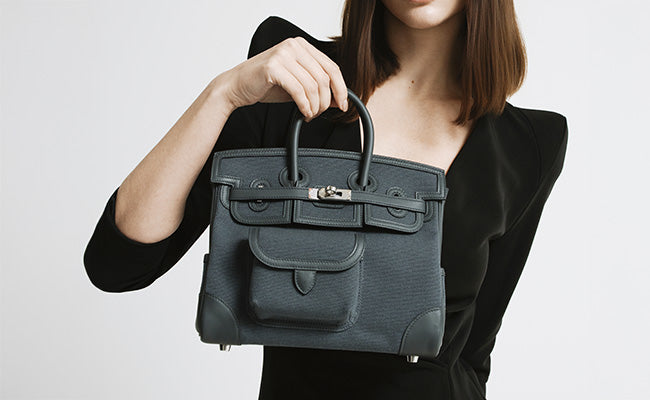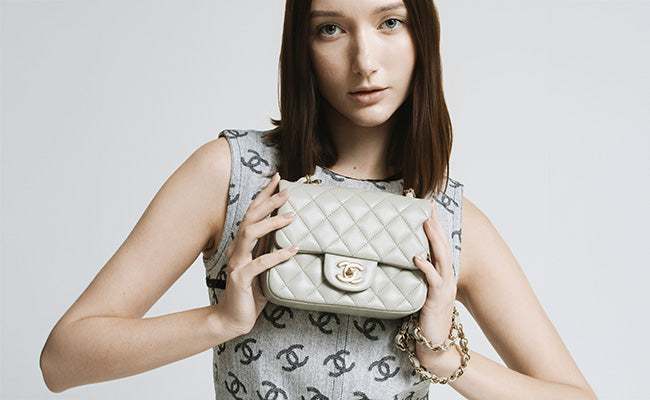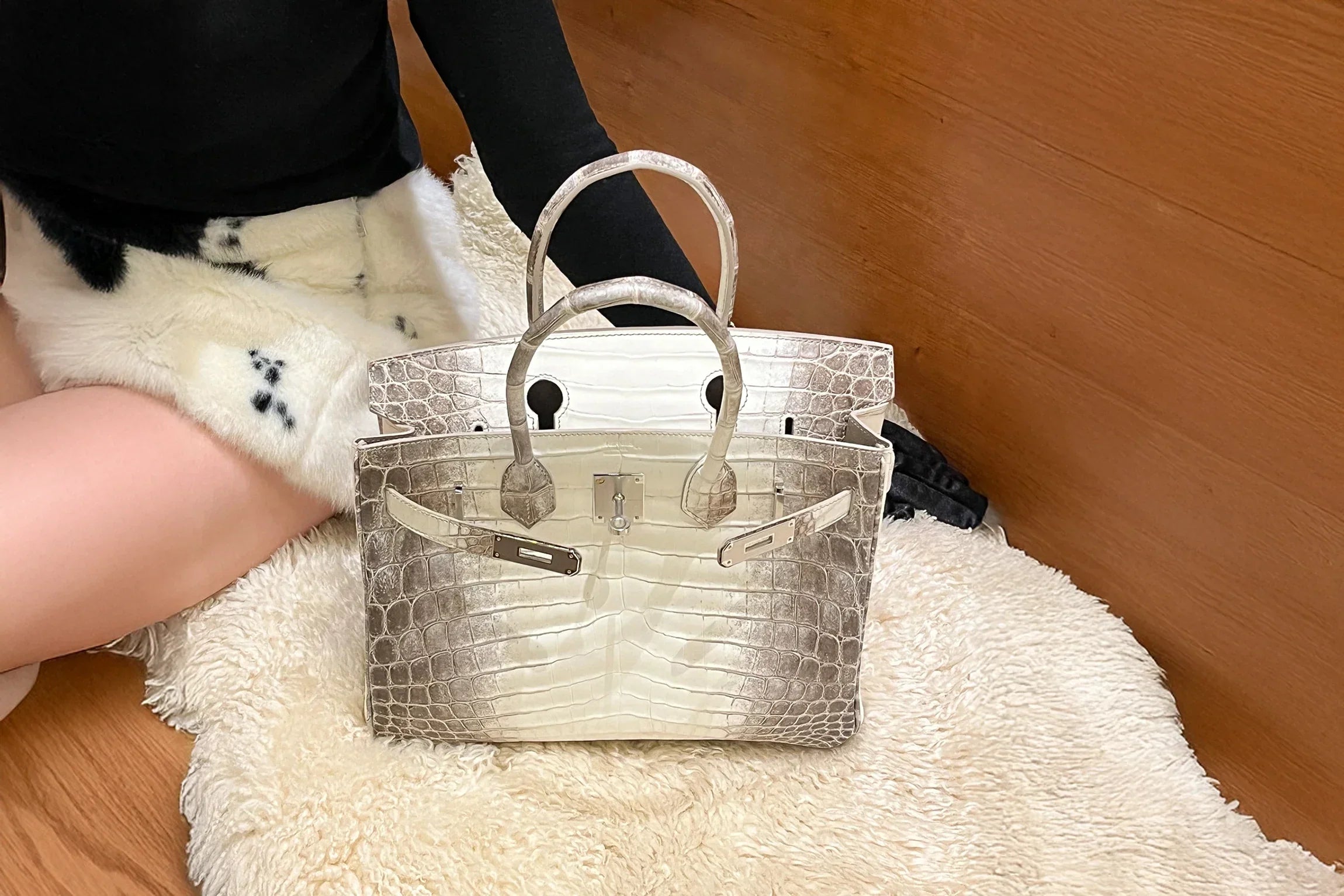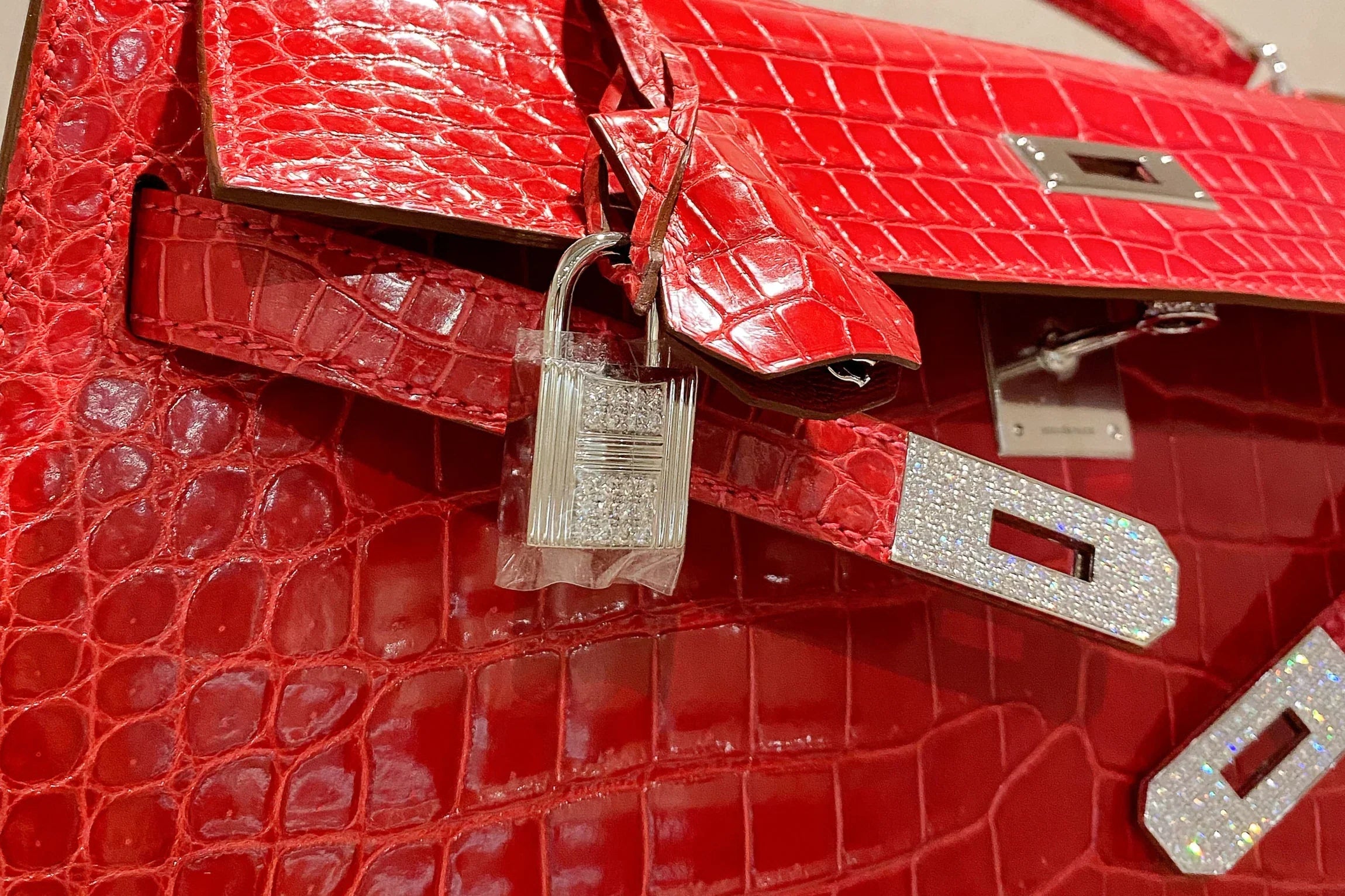
Hermès Limited Edition Bags: Are They Worth the Higher Price?
Check out our Hermès collection and Birkin bags!
Hermès limited edition bags have consistently dazzled us with their rare materials, special features, and air of exclusivity. But those higher price tags really make us pause and ask if these unique creations justify the hefty investment.
There’s more to these coveted bags than just buzz and beautiful leathers. Their collectibility, market value, and the ownership experience all play a role in how we judge their actual worth. Let’s take an honest look at why some limited editions soar in price, how they compare to the classics, and what we should consider before taking the plunge.
Key Takeaways
- Limited editions stand out for exclusivity and unique materials.
- Prices can be driven up by collectibility and rarity.
- Careful buying and research are key to a worthwhile purchase.
What Sets Hermès Limited Edition Bags Apart
Hermès Limited Edition bags aren’t just about a sky-high price. They stand out through unique designs, an insane attention to detail, and materials that are tough to find elsewhere.
Signature Design Elements
We can spot a Hermès Limited Edition bag from a mile away. Signature details like the Birkin’s slouch or the Kelly clasp instantly set them apart, but limited editions go even further, think wild colors, funky hardware, and playful details you just don’t see in the regular lineup.
Some bags show off hand-painted art, inlays, or contrasting trims. There are themed pieces, like the So-Black collection’s all-black look, or seasonal styles with creative twists. These are tiny runs, usually for VIPs or special Hermès events.
A few things that usually make a limited edition pop:
- Offbeat leathers or exotics (hello, Himalayan croc)
- Special lock shapes or hardware
- Artistic, hand-done details
- Collaborations with artists or designers
If you want a bag that turns heads, these details do the trick.
Exceptional Craftsmanship
Every Hermès bag gets hand-stitched by a single artisan, but Limited Editions really dial it up. Special stitching, crazy marquetry, and extras like jewel-encrusted hardware turn each bag into a little masterpiece.
You can actually feel the extra hours in the way everything lines up. The saddle stitch is always flawless, but with limited editions, you might see even more intricate handiwork, piped edges, layered cut-outs, or multicolored threads. It’s not just about looking good; it’s about showing off skill.
Some even come in their own box or have custom embroidery inside. In short:
- Made by master artisans
- Advanced, sometimes experimental techniques
- Meticulous finishing everywhere
Every step is about making something that lasts, not just something flashy.
Material Rarity and Exclusivity
Hermès goes out of its way to source materials that make other luxury brands jealous. Limited Editions use rare skins like Porosus croc, limited-run Togo, or even albino alligator. Sometimes they’ll mix in silk overlays or metallic leathers you just can’t find anywhere else.
Exotic skins are tightly controlled and traceable. Hermès sometimes rolls out a new dye or finish just for a handful of bags, which keeps things truly rare.
Here’s a quick look at some standout materials:
| Material | Why It Stands Out |
|---|---|
| Himalayan Croc | Limited quantities, unique patina |
| Swift + Epsom Mix | Lightweight, rare pairings |
| Shiny Alligator | Premium finish, subtle variations |
| Chèvre Mysore | Supple yet strong, uncommon dyes |
You’re not just getting a pretty bag, you’re getting something almost nobody else will ever own.
Pricing Breakdown: Standard vs. Limited Edition
Hermès bags are iconic, but limited editions take pricing to another level. So, how much more do we pay, and why do prices get so high? Let’s dig in.
Base Pricing Explained
A classic Hermès Birkin or Kelly already costs a small fortune. In Canada, a standard Birkin 25 in Togo leather might run $15,000 to $20,000, depending on hardware and color. Kellys start just over $13,000 for the simplest version.
Limited editions? Those start way higher. A Birkin Faubourg or Shadow Birkin might retail for $30,000 to $70,000, or more. Unique materials, intricate designs, and tiny production runs drive up the price.
You almost never see limited editions sitting in boutiques. Most go to loyal clients or get snapped up at auction, which makes direct price comparisons tricky.
Sources of the Premium
So what pushes the price up? Rarity is the big one. Hermès makes very few of each limited edition, sometimes just a few dozen worldwide.
Materials and artistry matter too. Special skins like Himalayan croc, embroidered leathers, or painted designs take rare skills and a ton of time. Custom hardware, hand-dyed leathers, and artist collabs all add to the cost.
Collector hype is another factor. Bags like the Birkin So Black or Kelly Picnic have almost mythic reputations, so demand and resale prices shoot up. Part of what you’re paying for is the thrill of the chase.
Hidden Costs and Price Trends
Don’t forget the extras. Insurance and security for a valuable Hermès can add hundreds a year. Some owners pay for climate-controlled storage for special skin bags. That’s not cheap.
Resale values for limited editions can swing. Some go up, but prices can dip if collector buzz fades or similar styles come out. Auction fees, taxes, and restoration costs eat into the investment too.
Here’s a quick look:
| Expense Type | Standard Bag | Limited Edition |
|---|---|---|
| Insurance/year | ~$150 | $300+ |
| Maintenance/resto | $200-600 | $400-1200 |
| Auction fees | 5-12% | 10-20% |
Budget for more than just the sticker price, these extras can sneak up on you.
Understanding The Collectibility Factor
Limited edition Hermès bags have a reputation for being highly sought after, thanks to their exclusivity, collaborations, and unique releases. Several factors contribute to their collectibility, making each bag much more than just a fashion accessory.
Scarcity and Production Numbers
Scarcity is a huge part of what drives up collectibility. Hermès is famously secretive about its production numbers, but it’s clear they keep these editions very limited.
For some designs, only a handful of pieces exist globally. This controlled scarcity makes finding one feel a bit like a treasure hunt.
Since bag availability is so unpredictable, many enthusiasts compare it to trying to win the lottery. When we finally see that elusive bag pop up in a boutique or online, we know it’s something special, and likely worth even more over time.
The rarity also fosters a strong resale market. Collectors pay close attention to provenance, original packaging, and even the condition of accessories like the clochette and lock.
Artist and Designer Collaborations
Hermès is known for inviting artists and designers to reimagine its classic bags. These special collaborations give us fresh designs featuring everything from bold prints to unexpected leathers or materials.
Famous names such as Jean-Paul Gaultier or collaborations with contemporary artists turn each bag into a wearable piece of art. It’s not just about slapping on a logo, the craftsmanship stays impeccable.
Usually, the result is a bag that looks distinctly different from standard offerings. This is a big draw for collectors and style enthusiasts wanting something a cut above the ordinary.
When a collaboration is announced, the buzz alone ramps up anticipation. Limited supply means those lucky enough to purchase a piece can end up with a standout gem.
Special Releases and Auctions
Occasionally, Hermès introduces bags for special events, store anniversaries, or charity auctions. These releases might feature one-off details, unique hardware, or exclusive colourways.
When a bag shows up at auction, such as with Christie’s or Sotheby’s, its collectibility soars due to the added backstory and competitive bidding. Sometimes, auctioned bags include celebrity provenance or custom features, raising interest even further.
Special releases often come with intricate documentation, certificates, or even personal touches from Hermès artisans. Owning one ties us to a tiny, celebrated moment in Hermès history, making it far more coveted than standard retail options.
The Investment Perspective
Limited edition Hermès bags often become objects of desire for collectors and investors. Their record at auction and select boutique sales shows trends in appreciation not seen in most ultra-luxury goods.
Historical Resale Values
Hermès bags like the Birkin Faubourg or Himalaya Kelly have repeatedly sold for well above their retail prices on the secondary market. For instance, recent auction results show the Himalaya Birkin achieving prices over $200,000 CAD for pristine examples, while store prices were much lower.
Collectors are quick to notice that, in the last decade, resale values for limited edition Hermès bags have outperformed most luxury handbags produced by other brands. A table of widely reported resale increases for top models is below:
| Model | Retail Price | Typical Resale Price |
|---|---|---|
| Himalaya Birkin 25 | ~$100,000 | $200,000–$500,000 |
| Birkin Faubourg 20 | ~$36,000 | $150,000–$200,000 |
| So Black Kelly | ~$18,000 | $45,000–$85,000 |
Past performance doesn't guarantee future returns, but Hermès has consistently stood out for both rarity and demand.
What Drives Appreciation
Several factors fuel these eye-popping price jumps. Rarity is the obvious one; Hermès might make only a handful of certain designs each year, with even fewer offered in Canada. That alone makes them tough to get.
Celebrity sightings have also played a role. When we see someone like Kylie Jenner or Victoria Beckham with a rare Birkin, social media buzzes and market interest spikes. Additionally, condition matters: bags kept in pristine, unused condition with original packaging often command a premium when resold.
Several buyers are driven by an “investment mindset,” believing they can offload a well-chosen Hermès later on for a profit. However, personal enjoyment is real too, let’s not pretend we don’t love carrying something truly rare, even if prices fluctuate.
The Owner’s Experience
There’s a lot that sets Hermès limited edition bags apart, from the moment we open the famed orange box to the way we decide to use or display our new prized possession. Each moment with the bag blends excitement, practicality, and a bit of luxury-induced hesitation.
The Unboxing and First Impressions
Nothing quite compares to the anticipation leading up to unboxing a Hermès limited edition bag. We feel an immediate sense of ceremony as we untie the ribbon and open the sturdy, iconic box. The luxury is tangible, from the soft fabric dust bag to that unmistakable Hermès scent.
The difference is clear right away. Limited editions often have unique hardware, rare leathers or custom artwork, which genuinely make us pause and marvel. We almost always reach for gloves, wanting to avoid fingerprints. With rarer pieces like a Horseshoe Club Birkin or a SO (Special Order) Kelly, there’s a private thrill in knowing only a handful of us will ever own one.
We usually document the whole process. The gleam of new hardware and the richness of the leather are surprisingly photogenic, especially in natural light. Unboxing sets the tone for the whole ownership experience.
Everyday Use vs. Display Piece
With a high-value, limited edition Hermès, the question quickly becomes: do we use it, or just admire it? It’s a careful balance. Some of us bring it out for special occasions, loving the attention and questions, while others keep it in the dust bag, away from sunlight and risk.
Here’s how our approach often looks:
| Use Type | Pros | Cons |
|---|---|---|
| Everyday Use | Feels amazing to carry, functional luxury | Risk of wear, possible stains or scratches |
| Display Piece | Preserves condition and value, stunning | Less personal enjoyment, can feel wasteful |
Those of us who rotate bags frequently sometimes take the middle ground, enjoying short outings and then putting the bag away. We’re always a bit more careful with limited editions than with regular Birkins or Kellys. It’s part pride, part preservation instinct.
Alternatives to Hermès Limited Edition Bags
Not everyone’s up for chasing a rare Hermès release or paying the sky-high premium. Luckily, there are other ways to snag a unique or ultra-luxury bag without giving up on style or that exclusive feeling.
Custom Orders and Special Requests
If you love the idea of something one-of-a-kind but dread the waitlists, Hermès has its Special Order (SO) program. Every year, a handful of clients get the nod to design their own Birkin, Kelly, or Constance. You pick the leathers, hardware, and color combos, sometimes stuff you won’t see in the regular lineup.
Getting that coveted Special Order invite? It usually means you’ve built a solid relationship with your sales associate. It’s not always a shortcut, but you do end up with a bag that’s truly yours, personal touches, initials, wild color pairings, you name it. Some luxury ateliers in Canada offer custom handbags too. You choose everything from exotic skins to hardware, and the price can be less than Hermès’s steepest markups.
Other Luxury Brand Offerings
If you’re open to branching out, plenty of luxury brands make bags that stack up in quality, design, and that “can’t-get-it-everywhere” factor. Chanel, Louis Vuitton, Dior, and Goyard all roll out limited editions, special collabs, and custom pieces on the regular.
Here’s a quick peek at a few alternatives:
| Brand | Notable Bag / Feature | Customization Options |
|---|---|---|
| Chanel | Limited Editions, So Black | Some, seasonal |
| Louis Vuitton | Capucines, Art Collaborations | Oui, via workshops |
| Dior | Lady Dior, ABCDior | Charms, custom straps |
| Goyard | Personalised Paint | Initials and patterns |
These choices can be a bit less elusive than hunting down a Hermès limited, and the buying experience is still luxe, sometimes even less intimidating. Sure, the “It-factor” might feel different, but craftsmanship and prestige? Still top shelf.
Buying Tips and Red Flags to Watch For
Nobody wants to drop a fortune on an Hermès limited edition bag only to get duped. It’s important to spot the real thing, dodge clever knockoffs, and avoid rookie mistakes in this wild market.
How to Spot Fakes or Reworked Editions
Fake and reworked Hermès bags can look scarily convincing, so you’ve got to stay sharp. Check the stitching, real Hermès bags use saddle stitching, a little angled and super even. If it looks sloppy or weirdly perfect like a machine did it, that’s a red flag. Hardware should feel heavy and cold, since Hermès uses solid metals. If it’s lightweight or the paint’s chipping, walk away.
Serial numbers and date stamps have to match the bag’s year, model, and the right spot. Be wary of reworked editions, sometimes, people retrofit real Hermès bags with non-original bits like added straps or swapped hardware. Shine a black light on the logo or leather; if it glows, something’s off, since authentic materials typically don’t.
When in doubt, ask a reputable third-party authenticator or stick with resellers who guarantee authenticity.
Securing an Authentic Limited Edition
Buying straight from a Hermès boutique is the gold standard, but let’s be honest, limited editions rarely sit on shelves. Trusted resellers, especially ones respected by the luxury crowd and who offer strong return policies, are your next best move.
Ask for all the proof: receipts, dust bags, boxes, even repair records. Sellers who dodge detailed photos or won’t show serial numbers? Nope. A legit seller will send you crisp images from every angle, inside, hardware close-ups, stamps, the works.
Here’s a quick checklist for safer buying:
| Important Step | Notes |
|---|---|
| Request detailed photos | All angles, serials, and hardware |
| Ask about provenance | Receipts, dust bag, box, repair records |
| Vet the seller | Reputation, reviews, authentication policy |
| Don’t rush | Walk away if anything feels off |
A little patience and a healthy dose of skepticism go a long way when you’re chasing these unicorns.
Frequently Asked Questions
Hermès limited edition bags stir up a ton of curiosity, especially among collectors and luxury fans. The stories behind these bags? Complicated pricing, rare materials, and a clientele that’s just as exclusive as the bags themselves.
What's the real deal with the price tags on Hermès Limited Editions compared to their standard collection?
Limited editions from Hermès usually cost a lot more than the standard range. The price hike isn’t just about being rare, it’s also about special materials, wild colorways, or unique collabs. You’re paying for that “nobody else has this” factor, plus design details you just won’t see in the main collection.
How do the prices of Hermès rare bags stack up against other luxury brands?
Hermès bags pretty much top the price charts, even compared to rare Chanel, Louis Vuitton, or Dior pieces. Other brands might have expensive seasonal drops, but Hermès rarities break auction records and private sale numbers. Their mix of history, craftsmanship, and true scarcity just keeps prices climbing.
Do the ultra-expensive Hermès pieces really hold their value over time?
A lot of Hermès limited editions, especially the most hyped styles, do hold or even gain value. You see this with special Birkins, Kellys, and those wild exotics. Condition, color, and provenance matter a ton for resale, but the right piece can be a solid investment.
What exactly makes the Hermès Crocodile bag and Himalayan collection so pricey?
The Himalayan and Crocodile bags cost a fortune because of the skins and the insane craftsmanship. The Himalayan Birkin, for example, uses Niloticus crocodile dyed to look like snowy mountains, a process that’s as unforgiving as it sounds. Only a handful of artisans can pull it off, so supply stays tight and prices go up.
Who tends to scoop up these Hermès jaw-dropping jewels of the accessory world?
Usually, Hermès saves its rarest bags for top clients, celebs, and hardcore collectors. Most of us know they’re offered quietly to people who’ve built strong ties with the brand. Sometimes you spot them at big auctions, where bidding wars get pretty wild.
Are the special order Hermès bags the secret to that exclusive, bespoke touch?
Special order bags, SO’s, as some call them, give clients the chance to pick their own colour combos and hardware, so no two are quite the same. But it’s not like you can just stroll in and grab one. Hermès usually reserves these for their most loyal customers, and you pretty much need an invite. If you’re after something truly unique, SO’s might be the brand’s best-kept luxury secret, though, honestly, who wouldn’t want a bag nobody else has?
